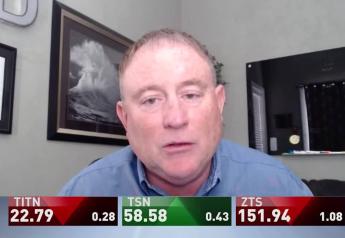What Biden's New Economic Framework Means for Ag Trade

President Biden spent last weekend at the Quad Summit 2022 in Tokyo, Japan. During the visit, Biden announced a dozen Indo-Pacific countries will join the U.S. in a “sweeping” economic initiative, termed the Indo-Pacific Economic Framework (IPEF), primarily focused on countering China.
Australia, India, Japan, South Korea and New Zealand, among seven other Southeast Asian countries—not including Taiwan—makeup the IPEF. These countries account for roughly 40% of the global GDP, according to the White House.
So, what is IPEF?
The framework includes plans to negotiate lowering tariffs as well as steps to remove barriers to market access.
According to the Biden administration, these goals will be achieved through four pillars of trade:
1. Supply chain resiliency
2. Clean energy and infrastructure
3. Tax and anticorruption
4. Fair and resilient trade
Gina Raimondo, U.S. Secretary of Commerce says her team will be spearheading the first three pillars. Of the first pillar, supply chain resiliency, Raimondo shared her team feels that had the IDEF been established prior to COVID-19, the U.S. would have experienced “much less disruption” in trade, especially with China.
“As businesses are beginning to increasingly look for alternatives to China, the countries in the Indo-Pacific Framework will be more reliable partners for U.S. businesses,” said Raimondo.
What IDEF Means for Ag
U.S Trade Rep Katherine Tai says IDEF will fast-track the WTO’s Trade Facilitation Agreement, which aims to improve the movement of goods across borders.
“We will see commitments with IPEF partners that facilitate agricultural trade through science-based decision making and the adoption of sound, transparent regulatory practices,” she says. “This will help our farmers, our ranchers, and our fishers gain certainty for getting their products to the region.”
Lessons in the TPP
Michael Anderson, Corn Refiner Association’s vice president of industry affairs, says the IPEF ag developments shows a “significant step” in the U.S. reasserting it’s influence in the region following the Trump administration’s work in withdrawing the U.S. from the TPP in 2018.
Others aren’t as convinced as Anderson. Wiesemeyer feels IPEF will create “challenges” for coexistence because of the Comprehensive and Progressive Trans-Pacific Partnership (CPTPP), which includes Japan and other Southeast Asian nations.
Tai says the CPTPP—formerly known as TPP, when the U.S. was included in the agreement—would not have worked for America and would not have passed through Congress, which is why she feels IPEF is the right choice for the U.S. moving forward.
“There has been a lot of swirling around the fact that there is not tariff liberalization incorporated into the scope of what we are engaging on here,” she says. “And I think that also goes to the fact that traditional trade agreements are very much a part of the practice that has brought us to where we are, both in terms of the fragility and where that trajectory has taken us.”
The White House reiterated that TPP and IPEF shouldn’t’ be lumped into the same category, because IPEF is not a traditional free trade agreement.
“IPEF is a more innovative and flexible approach, designed to reflect the fact that our economies have changed,” said Commerce Secretary Gina Raimondo.
China Tariff Outlook
President Biden said on Monday the U.S. State Department is wanting to “lighten up” the China tariffs placed by the Trump administration:
“I am considering it,” he said. “We did not impose any of those tariffs. They were imposed by the last administration and they’re under consideration.”
Biden looks to discuss the China tariffs with Treasury Secretary Janet Yellen. However, Tai feels the tariffs must stay in place, or she’ll lose her trade bargaining leverage.
Neil Thomas, a China analyst at the political risk consulting firm Eurasia Group disagrees with the Biden administration’s China trade efforts and work in the IPEF, saying “what countries in Asia want is precisely what Biden cannot give: greater access to the U.S. market.”
Congress would need to ratify the President's economic framework before it could become official.
More on trade:
> Two Reasons to Keep U.S. Tariffs on Chinese Imports
> 5 Trends Happening In China That Will Affect Your Farm
> U.S. Trade Tactics to Evolve with China's Infrastructure Plan







